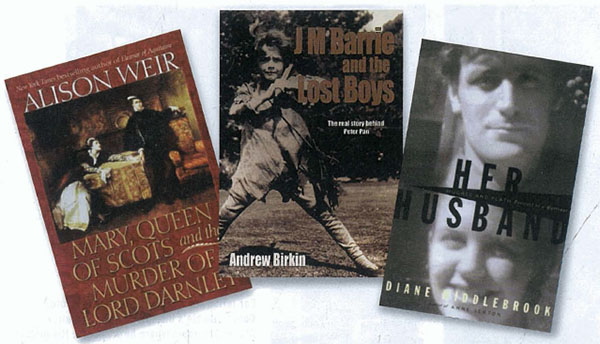
[caption id="TheLatestBooksMusicVideosandTelevisionProgrammesAboutBritain_img1" align="alignright" width="441"]

Eighth Army: The Triumphant Desert Army that Held the Axis at Bay from North Africa to the Alps, 1939-1945, by Robin Neillands, published by The Overlook Press, One Overlook Drive, Woodstock, N.Y. 12498; 384 pages. Hardcover $32.50. www.overlookpress.com.
ONE OF THE BEST KNOWN British forces in World War II, the Eighth Army, was formed in 1941 as a desert force. Combating Rommel’s Afrika Korps, the Eighth Army, under the command of General Bernard Law Montgomery, began pounding away at the Axis forces at the battles at Alamein . General Montgomery quickly became a household name and a popular choice to be one of the eventual architects of D-Day, as he led the invasion of Sicily, and ultimately the invasion of Italy as a whole.
Robert Neillands Eighth Army tells this story in the form of a narrative history, using first-hand accounts from soldiers of the Eighth Army and more than three dozen detailed maps and pictures. Laying out the military strategy, internal conflicts, and the politics of many of Eighth Army’s decisions, Neillands offers an accurate, in-depth—and oftentimes chillingly graphic—account of the desert army that held the Axis at bay from North Africa to the Alps, and marched more than 3,000 miles to victory.
As Neillands writes, “This is the story of an army, and only that Army…. The aim of this book is to tell the story of Eighth Army as an entity and in context, from its beginnings as the Western Desert Force in 1940 to its end as the triumphant army of 1945.”
This story shows touches of humanity amidst a war that had a horrific beginning and an even more ghastly end. It is the story of this triumphant desert army, the Desert Army, the Eighth Army, that elicits the author’s opinion that “the secret of its enduring reputation and its eventual success—lies, I suspect, in its men.”
—ALFRED A. Z. SIHA
FINDING SHAKESPEARE ON VHS AND DVD
[caption id="TheLatestBooksMusicVideosandTelevisionProgrammesAboutBritain_img2" align="alignright" width="157"]

If you missed In Search of Shakespeare when it aired on your local PBS station this past winter, you’re in luck: the search continues on DVD and VHS.
Although Shakespeare remains the most famous literary figure of all time, his life is mysterious. Very few facts are known for sure about his early years, in particular. This four-part series goes in search of the Bard’s life, and the trail leads viewers through a fascinating Elizabethan world of religious tumult where keeping one’s true loyalties and associates a closely guarded secret was often the most prudent thing a high-profile playwright could do.Series host Michael Wood provides an irreverent look at the world through which Shakespeare moved, and the remarkable impact it had on his work.
In Search of Shakespeare is available from the PBS Shop online, at www.shoppbs.org. DVD $39.98. VHS $34.98. The companion book is also available for $29.95.
The Art of Robert Burns, The Musicians of Edinburgh, published by Scotstown Music, Aurora, Colo. 80010, tel. 303-343-1326, 60 minutes. $20.50. [email protected], www.scotstown.com.
HERE’S A WELCOME CD that brings to light the history and nature of Robert Burns’songs and the music behind them. Old favourites mix with those seldom heard in vocal and instrumental arrangements evoking the drawing rooms of 18th-century Edinburgh where they were likely performed. Simple, sometimes a cappella vocal solo work by a soprano, a tenor, and a baritone is accompanied sparingly by cello, harpsichord, fortepiano, and violin—in the talented hands of American Bonnie Rideout. Original instrumental renditions of some of the folk tunes Burns set lyrics to are hauntingly beautiful. Complete lyrics, with translation from Scots where needed, are included. The CD was recorded in Rosslyn Chapel, Roslin, Midlothian, Scotland.
—JUDY P. SOPRONYI
The Battle of Hastings: 1066, by M.K. Lawson, Gloucestershire, UK, Tempus Publishing Limited. Distributed in North America by Trafalgar Square, North Pomfret, Vt. 05053, tel. 800-423-4525. 320 pages. Hardcover $35.
Two GREAT ARMIES CLASHED near the modern town of Hastings on 14th October 1066. They fought nearly all day and into the evening, and at the end, Harold II, the last Anglo-Saxon king of England, lay dead. The remnants of his army fled into the forest.
The victor, Duke William of Normandy, was crowned King in London on 28th December. He soon began replacing English nobles and clergymen with his own followers. His reign marked the end of England’s close links with Scandinavia and the beginning of stronger ties to the Continent.
M.K. Lawson, History Master at St. Paul’s School in Barnes, London, has written what has been called the most complete history of the Battle of Hastings in more than 100 years.
Not many first-hand accounts of the battle survive, but Lawson does a great service to readers by analyzing the most reliable sources of information. Archaeology has revealed very little of use, as yet. And songs and “eyewitness” accounts come to us second-hand at best. Lawson relies mainly on the Anglo-Saxon Chronicle, the Domesday Book, and the Song of the Battle of Hastings, the last in French, though he studied many other documents, too.
In addition, the famous 11th-century Bayeux Tapestry depicts scenes of the battle in needlework. The artefact has been reworked in key places and is not as complete or as accurate as it could be, but it does suggest the awesome and decisive nature of the battle. Lawson’s book includes 50 illustrations, including black-and-white details of the tapestry.
The jigsaw puzzle that Lawson has tried to assemble relies not only on facts but also on a fair amount of conjecture. He says that Hastings, pivotal though it was, cannot be as well known as more recent battles, like Waterloo or D-Day. However, several themes emerge from the most trustworthy accounts that suggest how the battle went that day—the long and hard-fought nature of the conflict; the difficulty the’ French had in breaking the densely packed English line; the significance of a real or feigned retreat by William’s men.
As Lawson says, the battle demonstrates how closely British history is tied to affairs just across the Channel.
—DAVID MARCOU
RECOMMENDED
LONG GONE ARE THE DAYS when British and American soldiers faced off against one another on the battlefield. Throughout the 20th century, and on into the opening years of the 21st, British and American troops have been the truest of allies in campaigns from North Africa to France to the streets of Iraq.
But it was not always so, and this June a four-part documentary miniseries, Rebels & Redcoats: How Britain Lost America, will recall the troubled years of the American Revolution—from a British point of view. Every American school child knows all about evil King George and the virtuous patriots. Of course, the truth is not so black-and-white, and this PBS series provides some much-needed historical balance by revealing some often-overlooked blemishes on the characters and motivations of some of the leading revolutionaries, yet always without undue rancour.
Check your local television listings for air times, or visit the Internet at www.wgbh.com.





Comments